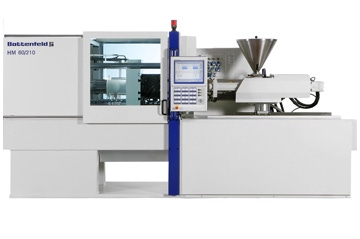New Medical Designs Power Metal Injection Molding
August 25, 2008

New designs formedical and automotive applications will drive growth of powder metal andceramic injection molding (PIM), says Randall M. German,mechanical engineering professor at Mississippi State University and author of "PowderInjection Molding: Design & Applications."
"Asian PIM willgrow nearly 11 percent per year, while Europe and much of the rest of the worldwill grow at a more modest 8 percent per year," German said in apresentation at the PIM World Congress held recently in Washington, D.C.
One example of newmedical products is a 17-4 PH stainless steel articulation gear used in asurgical stapling unit made by metal injection molding to a density of morethan 7.65 g/cm3. ParmatechCorp., Petaluma, California, won the grand prize in themedical/dental category at the World Congress for the part. The MIM part has anultimate tensile strength of 130,000 psi, yield strength of 106,000 psi and a25 HRC hardness.
MIM is gaining ground because it combines functions in complex, net shapes thatrequire no finishing operations. The Parmatech part has tight tolerances andprovided a 70 percent cost savings compared to machining the gear from barstock.
Parts Get Smaller
There's a trendtoward increasingly smaller parts in MIM, partly due to high powder costs. Mostparts weigh between 5 and 10 gm, says German, although parts range from0.002 gm to 1.3 kg. The North American PIM companies sometimes trendtoward higher mass parts for medical applications, according to German.There's also significant interest in microminiaturized medical parts.
More than one-thirdof sales by North American PIM producers go to medical and dental applications.
"For continuedgrowth, MIM needs to focus on competitive advantages that help defend the highcomponent cost when compared to forging, machining, casting and relatedtechnologies," says German. "One goal is to improve dimensional control, secondis to reduce process costs and a third is to shorten the time to production."
German says thetotal PIM industry consists of 360 firms, of which less than four-fifthspractice metal injection molding. The U.S.,Germany and Japan accountfor 57 percent of global PIM sales. Global PIM sales in 2007 reached 1.07billion, says German.
Steel-basedmaterials dominate metal injection molding, although there is tremendousinterest in new materials' systems such as tungsten alloys and titanium.Tungsten alloys are particularly attractive as lead replacements.
About the Author(s)
You May Also Like



.jpg?width=300&auto=webp&quality=80&disable=upscale)

